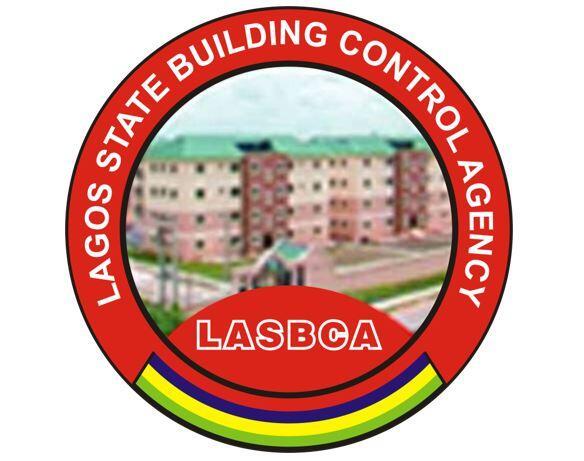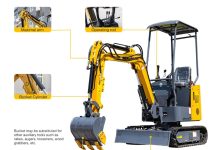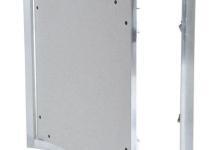In civil engineering design and construction works, professional engineers (fully registered/chartered engineers) are often asked to review the work or documents prepared by another professional engineer. In all professional engineering bodies, there are existing policies or guidelines on how engineers should professionally relate with fellow engineers. The aim of this article is to highlight some well established and globally accepted guidelines for reviewing the work of a fellow professional engineer.
The guidelines in this article provide professional engineers performing reviews of work created by other practitioners with guidance on how to complete such tasks in a way acceptable to the profession. The suggestions in this article are thought to be in line with all of the practitioners’ professional obligations, and are adapted from the guidelines of the Professional Engineers Ontario (PEO).

In so many professional engineering bodies’ ethics and code of conducts (professional engineering acts), it is clearly stated that engineers should not agree to review another practitioner’s work for the same employer unless you have the other practitioner’s consent or the other practitioner’s connection to the work has been terminated.
Why should my work be reviewed?
Although fairly specific, the prohibition on reviewing another engineer’s work by several engineering acts is constrained by some factors. Professional engineers shouldn’t, however, object to having their work or that of a colleague, reviewed. It is reasonable and, in the event of legally mandated requirements, a necessary practice for another engineer to review the work of a practitioner. It is in accordance with a practitioner’s ethical requirements, the association’s duty to uphold high professional standards, and the requirement to preserve the public’s confidence in the profession as long as the practice is carried out impartially and fairly.

Giving feedback on the work of another professional engineer has wider ramifications that should be understood by all practitioners. The fact that a practitioner’s work was reviewed may occasionally have a detrimental effect on the engineer’s reputation. A negative review can permanently damage the relationship between a practitioner and a client or employer, even if the outcome is not generally publicised. Reviewing engineers must be familiar with the methods for assuring the fairness, impartiality, and thoroughness of the review process if they are to ensure reviews achieve the justifiable aims in the most professional manner.
An impartial evaluation may reveal errors or issues with the examined work that need to be disclosed. Different projects will differ in what needs to be reported and to whom, so the reviewing engineer should be given some leeway. The reviewer must understand the difference between legitimate flaws in the work and professional differences of opinion in order to correctly convey what is required. Practitioners conducting reviews must be aware of these problems and take all necessary precautions to handle them properly.

Reasons and Types of Professional Review
A practitioner’s work may be reviewed for a variety of reasons and in a variety of contexts. Colleagues inside an organisation, staff members of regulatory agencies, employees of client companies or other organisations utilising the engineer’s work, or outside engineers hired by a client to provide an unbiased evaluation of the work are all examples of reviewers. A request for a review may result from a variety of situations, including corporate quality assurance and legal action against a practitioner.
However, the Professional Engineers Ontario identified two general types of review;
- Practice review, and
- Technical review
In the wider context, the main objective of a practice review is to evaluate the job performed by an engineer or the service they supplied. In this case, the assessment of the practitioner’s performance is made.
Conversely, a technical review evaluates whether the information in a document or design produced by an engineer is accurate, complete, or acceptable. Technical reviews produce opinions about the output quality of the job, not the engineering process itself. In other words, a technical review evaluates a design, analysis, calculation, instruction, or opinion, but a practice review evaluates the practice of a professional engineer.

Technical Reviews
Technical reviews are conducted to evaluate a design, technical report, or other engineering service output’s acceptability and see if it complies with project criteria. Typically, these evaluations only involve randomly checking engineering documents for technical errors.
Technical reviews, however, can involve in-depth analyses of the methodology, design criteria, and calculations employed by the authoring engineer as well as the accuracy, suitability, economic viability, or other characteristics of the design decisions or study recommendations, depending on the needs of the client.
The reviewer will confirm the accuracy of computations in addition to making sure the right approach was used. Technical reviewers should also make sure that the standards, codes, and other design criteria utilised in the project under consideration are acceptable for it and that they were implemented correctly. According to the Professional Engineers Ontario, technical reviews generally aim to evaluate the following things:
- whether the completed work has met the objectives;
- whether the objectives set out for the work were reasonable;
- whether there were other options that should have been considered by the authoring engineer;
- whether the evaluation of options is comprehensive, unbiased and rigorous;
- validity of any assumptions made by the authoring engineer;
- validity of the conclusions or calculations;
- validity of recommendations; and
- fitness of the design or recommendations to the requirements.
The reviewer is free to offer feedback on whether the design is suitable for the intended use, including assessments of its effectiveness and economics. In the case of a technical report, the reviewer should state whether the analysis or facts in the report support the recommendations.
The review engineer may comment on the inventive, efficient, cost-effective, and other noteworthy parts of the design or report in addition to pointing out flaws, abuse, or lack of application of recognised industry standards, regulations, or design criteria.
A technical review wouldn’t often be as thorough as an original design or analysis. In most circumstances, random checks of the work rather than a thorough examination of every part of the writing engineer’s work would be carried out. The extent of the review, however, must be left to the reviewers’ judgement, based on what they think is required to fully complete the assignment and satisfy themselves that they have enough data to draw reliable conclusions.
The reviewing engineer may suggest to the client or employer that a more thorough examination is required if such a recommendation is justified in light of the issues found during the assessment.
Regulatory Review
Municipal building departments, building control agencies, provincial ministries and their agencies, federal government agencies, and town planning agencies are examples of regulatory authorities that carry out different types of reviews. Employees of the regulatory body in these situations examine the practitioners’ work that has been submitted for approval in order to verify that it complies with prescriptive legislation like building codes and municipal bye laws.

A professional engineer is not required to analyse regulatory compliance, with the exception of what is detailed below, as it is a legal rather than an engineering matter. In most cases, it is unlawful for those performing regulatory compliance checks to provide engineering opinions.
Only the information in the engineering papers or drawings must be compared to standards, codes, or legal requirements during the compliance check. For instance, whether the design is economical or not should not be their concern, rather it should bother on whether it meets the regulatory requirements.
A regulatory body should only notify the practitioner when performing compliance checks to identify non-compliance issues. The authoring engineer must be trusted to make the final call on how to modify the document to address non-compliant concerns.
Regulating authorities do, however, occasionally conduct more thorough evaluations to ascertain whether designs are technically adequate, to ascertain whether they fulfil performance standards, or to evaluate designs that are not subject to prescriptive rules.
For the municipality’s own due diligence, the building department, for instance, might carefully examine a proposed structural design to ensure that it is secure. A professional engineer must conduct this kind of evaluation, and it must be conducted in accordance with the guidelines for a technical review outlined in this policy.
In-house Design Review in Organisations
For a variety of reasons, professional engineers working for engineering firms or other organisations may be asked to examine their coworkers’ work. Such internal evaluations could be technical reviews for quality control or practise reviews to see if the authoring engineer is competent of completing the task at hand or for personnel performance evaluation objectives.
Because the firm will ultimately be responsible for the outcome of the engineering service, it is expected that the relationship between the practitioners will be very cooperative when reviews are conducted by a colleague within an engineering firm. The reviewer may act as a problem-solving consultant in these situations. For this reason, a practitioner with greater authority inside the company may override the authoring engineer’s judgement.

Written corporate policy notifying all practitioners that their work will be examined is sufficient notice in organisations where all drawings and documentation are scrutinised for quality before issuance or approval. Only regular reviews—including those conducted as part of employee performance audits—are subject to this regulation. The practitioner must be informed prior to the assessment of the work in situations where the review deviates from customary quality assurance because there are doubts about a person’s capacity to do the responsibilities given to them.
Pre-Construction Reviews
A professional engineer working for a contractor, fabricator, manufacturer, or other party that will use the authoring engineer’s design to build or create a product for which the reviewing engineer’s employer will then be liable is also able to examine the authoring engineer’s work. In these situations, the individual or group employing the design may be inspecting the engineering documents as part of its due diligence evaluation.

Since a company creating a product or executing a project must be able to rely on the correctness and thoroughness of the engineering work, it is reasonable for them to review the design to make sure it is error-free. In this scenario, a review is being requested by a party other than the writing engineer’s client or employer, and the review’s goal is to safeguard the general public or the design’s user rather than to evaluate the professional engineer.
Clause 77.7.ii of O. Reg. 941 (PEO) does not apply because the review was started by someone other than the authoring engineer’s employer or customer. The authoring engineer need not be made aware that a review is being conducted by the reviewing engineer.
Review or Second Opinion?
Reviewing engineers should always make it clear if the client or employer is asking for a second opinion or a review of a practitioner’s work. A second opinion is an assessment of the problem that is offered to the client in order to provide the client with more information before making a choice. An engineer offering a second opinion examines the identical problem that the first engineer was given, and without taking into account the first engineer’s work, they provide a solution, develop a concept, or offer suggestions.
For instance, a client who wishes to construct a medium rise building can contact an engineer who suggests an expensive piled-raft foundation. Due to the high cost of the suggested work, the homeowner may opt against moving forward right away in favour of seeking a second opinion. It is obvious that what is required in this case is not a review of the work of the first engineer, but rather a unique study and recommendation, which can be made without taking the work of the first engineer into account.
General Principles for carrying out a review
(1) The extent of the the review must be project-specific and as thorough as called for by the scope and kind of review. The extent of checking is always up to the reviewer’s reasonable discretion and judgements of the most effective approaches to complete the task. The reviewer must always be certain that the conclusions—whether favourable or unfavorable—regarding the documents’ quality or the writing engineer’s service are founded on accurate evaluations of the subjects under consideration.

(2) A review must be thorough enough to give the client or employer adequate information to answer all of their questions and to support the reviewer’s assessments of the work’s quality. This must be however done in accordance with the principle of fairness. If a review is not thorough enough, the reviewer may overlook problems that the client or employer should be made aware of. The reviewer’s service would be inadequate in this case.
(3) On the other side, a review shouldn’t go so far as to criticise unimportant, trivial issues. A reviewer shouldn’t point out spelling mistakes, poor grammar, poor drafting, or other features of a document’s form unless these issues make the document unclear, hard to understand, or provide others depending on it the chance to apply it incorrectly.
(4) Both verbally and in writing, it is important that the reviewer’s mandate be phrased neutrally and without making any assumptions about the desired outcome. The reviewing engineer should remind the client or employer that the reviewer is professionally required to stay independent and exhibit no bias in performing this service if the client or employer declares or implies that a practitioner should skew the evaluation in any way.
(5) Reviewing engineers should create a plan for conducting their technical reviews that outlines the documents to be examined, resources available to the reviewer, the methodology of the review, the format of the review report, the protocol of communications between the reviewer and other parties, considerations for confidentiality, a schedule for the review, and other pertinent factors. Such a plan, provided to the client before starting a review, will demonstrate the reviewing engineer’s independence and reduce the possibility of any conflicts of interest or misconceptions.
Basis for Review and Criticisms in Reporting
Reviewing engineers must identify both the positive and negative elements of the engineering work and draw attention to anything that is inaccurate, ambiguous, unsupported, or problematic in the original document as a standard part of the process. It is part of the reviewer’s job description to occasionally reflect negatively on elements of the work completed by another professional engineer. Reviewing engineers may, however, feel that they are also expected to be critical and to uncover things that, while not always wrong or harmful, can nonetheless be seen negatively.
Reviewers must make sure that their reporting of negative evaluations adheres to the provisions in the Code of Ethics that outline practitioners’ obligations to other professional engineers. According to article 77.7 of O. Reg. 941 (PEO), it stipulates the following:
“A practitioner shall,
i. act towards other practitioners with courtesy and good faith, …
iii. not maliciously injure the reputation or business of another practitioner”.
This approach should be carried out objectively and consistently performed in order to be fair to an authoring engineer. For this reason, while determining what is incorrect with an engineering job, reviewers should follow the procedure below.
Identifying the applicable assessment criteria is the first step in every review. It is obvious that in order to be objective, a practitioner’s work must be compared to the standard procedure for professional engineers performing identical work in order to assess both the technical and professional components of their job. Professional engineers are required to abide by all laws establishing standards and codes, however not all laws establishing best practices are adopted by practitioners experienced in a given industry.

The comparison of the work with instances of good engineering practice is another crucial factor for forming judgements in a review. Good engineering practice consists of widely accepted, well known, and generally acceptable standards that has been used or accepted by the majority of professionals that routinely work in that field.
Reviewing engineers shouldn’t inquire about an authoring engineer’s qualifications. Only when they are qualified to do so, licensed practitioners are expected to accept and complete engineering tasks. The authoring engineer makes this evaluation of skill. It shouldn’t be expected of reviewing engineers to assess the expertise of authoring engineers or to express an opinion on their suitability for the tasks described in the documents.
A reviewing engineer should not ask a client or an authoring engineer to disclose the fee or salary paid to the authoring engineer for the work under review. Practitioners must constantly devote enough time and effort to carrying out their tasks in a way that adheres to the standards of the engineering profession. Professionalism standards are unaffected by payment or income and are not negotiable with clients or employers.
Ethical obligations of a reviewing engineer
The obligations of a reviewing engineers are therefore as follows;
(1) Notification
A practitioner should only take on the assignment with the knowledge of the other practitioner if a client or employer requests that they review the work of another engineer who is still working on a project under the terms of an employment contract or a contract for professional services. However, it is the review engineer’s duty to make sure that the client is aware of the obligation for notification and complies with it. This notification should be made by the client or employer.
Article 77.7.ii of PEO specifically indicates that it only applies when the engineer is asked by the same employer to examine the work of another practitioner. The relationship between the practitioner and the employer/client is, without a doubt, the crucial issue in this area. Only while that professional relationship is active does the responsibility apply.
(2) Confidentiality
Practitioners need to always consider their interactions with clients and employers as professional ones. A professional relationship is based on trust, thus practitioners must conduct in a way that fosters both acquiring and preserving that trust. A reviewer shouldn’t speak to an authoring engineer or anybody else about the review without first asking and receiving authorization from the client or employer.

(3) Good faith
Being driven by a conviction for the validity of one’s beliefs or the morality of one’s deeds is referred to as acting in good faith. The rightness of a course of action is determined by adherence to the Code of Ethics for a practitioner offering professional engineering services. Evaluations of whether one’s opinions are true or false are subjective judgments based on a person’s character. Every practitioner must be realistic about their own assessments and assured that using their knowledge and abilities consistently produces trustworthy results while accounting for human imperfection.
(4) Fairness
Any person who has discretion over how to distribute burdens and advantages among group members must adhere to the idea of fairness. Practitioners are free to express their opinions about the work in a review. Depending on the nature of the opinions and the effects they have, they may help or hurt the customer, authoring engineer, or other stakeholders in different ways.
The reputation, standing in the engineering community, or financial interests of an authoring engineer should not be thought to be harmed by statements made by a reviewing engineer or the release of all or any portion of a review report. If the client or employer asks the reviewing engineer to take part in any such activity, they shall refuse unless the publishing of the report is mandated by the freedom of information act or another law.
However, a professional engineer is not prohibited by the duty of impartiality from stating facts or offering an honest opinion that could be detrimental to another professional or the client.
(5) Conflict of interest
A relationship between a practitioner and one or more parties that could be seen as a conflict of interest is another issue that could occur when offering professional services. A conflict between two or more conflicting interests and a duty of the practitioner is the primary characteristic of a conflict of interest. A conflict of interest occurs when a practitioner finds it difficult to fulfil their obligations to someone whose interests may be impacted by their decisions.
Conflict arises when the practitioner or a third party both have interests that must be ignored or put aside in order for the practitioner to pursue their own. It would be against the practitioner’s obligation to disregard or put that person’s interests second. In general, the responsibility that needs to be upheld is one that the practitioner has to the client or employer; nevertheless, there are numerous additional obligations that practitioners have, including obligations to fellow practitioners, which may also be jeopardised by competing interests.










